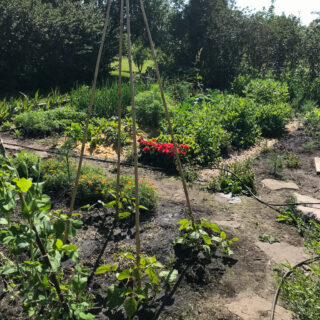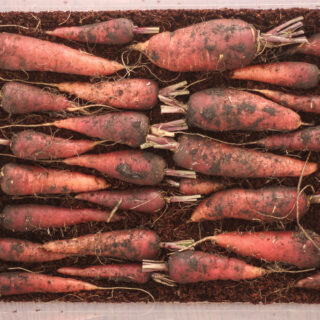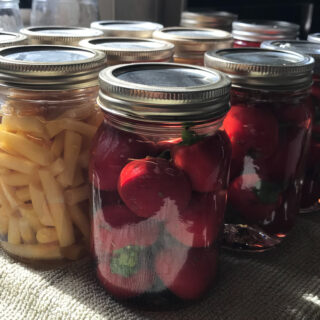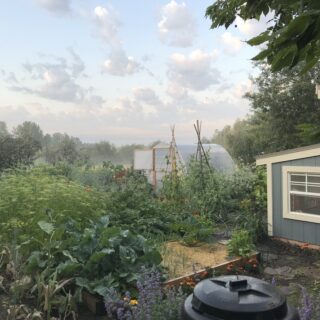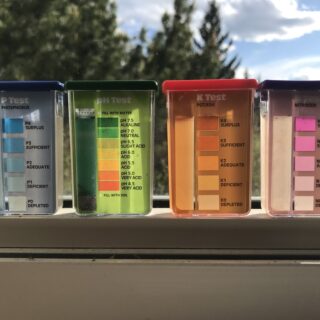
Gardening here in the Canadian foothills brings a myriad of challenges with it. A short season, cold nights and highly variable weather are just a few of the things that make it a unique climate in which to garden. We are forced to cram an entire season of growing into what essentially amounts to just a few short months – and that is assuming we don’t get snow in June or devastating hail.
That means that if we hope to be creating resilience for ourselves by growing at least some of our own food we really do have to find a way to extend our season and work on preserving our lovely produce. This allows us to grow a wider variety of things over a longer period, and to keep those foodstuffs farther into the remainder of the year.
There are many methods for preserving the garden’s harvest but choosing the safest method for your food is important. Using a variety of methods also helps to create resilience. If one system fails, you can likely count on others.
So how can we keep all of our lovely produce and create resilience at the same time?
We can ferment many types of foods beyond, but including, sauerkraut. I have fermented cabbage, cauliflower, garlic scapes and grains (to make sourdough bread). I also ferment kombucha and red wine vinegar which don’t really preserve a harvest but do add to my family’s gut health and also to delicious meals.
Freezing is a great way to keep food, but of course you eventually run out of room in the freezer, and if you happen to lose power then all of your lovely food is likely a write off. Having a backup is a good idea.
Canning is another great way to ‘put up’ the harvest. Making your food shelf stable is power outage proof. The drawback is storage space and a need for some equipment specific to what you hope to can.
I used to can a fair bit when my kids were young. Using a water-bath canner I preserved mostly fruits like peaches and also some pickles. The problem with water bath canning is that fruits and pickles are about the only thing you can use them for. They can only be used for high acid foods. That means fruits. Vegetables can be canned in a water bath canner but only if acid is added to them, turning them into pickles. So, jams, jellies, canned fruit and pickles are what you are limited to. Because of this I haven’t been canning as much. I don’t eat a lot of fruit, certainly not with added sugar, and we only eat so many pickles.
So, about two years ago I started looking into pressure canners. A pressure canner allows one to can items that are not high acid. Things like soups, meats and vegetables can only be safely canned when using a pressure canner. The drawback is that the equipment is a bit more (or a lot more) expensive and it is also a bit intimidating.
I started doing some research, watching some videos, doing a bit of reading etc. Now, for those who know me you know that I like having good equipment, the right equipment, to do the best possible job. That meant one of two canners; the Presto pressure canner, or the All-American. These two canners are the two most often recommended by those who are in the know. Because I’m an equipment geek and because it has a near-cult following I was, of course, enamoured with the All-American which has been built in America since 1930. But holy moley, it is not cheap! And, if you want to talk about intimidating, this sucker suits the part.
I mean just look at this behemoth! I’ve nicknamed it ‘Sputnik’.

Long story short I bit the bullet when I found one on sale (still expensive) early in the spring, right as Covid hit North America. My timing was perfect as since then, with people pretty freaked out about food supply chain issues, these have been super hard to come by. Now that I’m over my initial intimidation I’ve been busily putting Sputnik to work. Together we’ve been preserving wax beans, tomato soup, chicken bone broth, beef broth and baked beans.

I’ve also water bath canned some fantastic homemade ketchup, my sister-in-law’s favorite salsa, and two rhubarb grilling sauces; one with sour cherries and one with haskap berries.
Have you changed the way you view your food supply chain since March? Have you ever tried preserving with a pressure canner?
